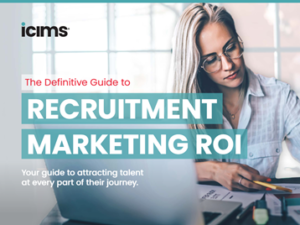

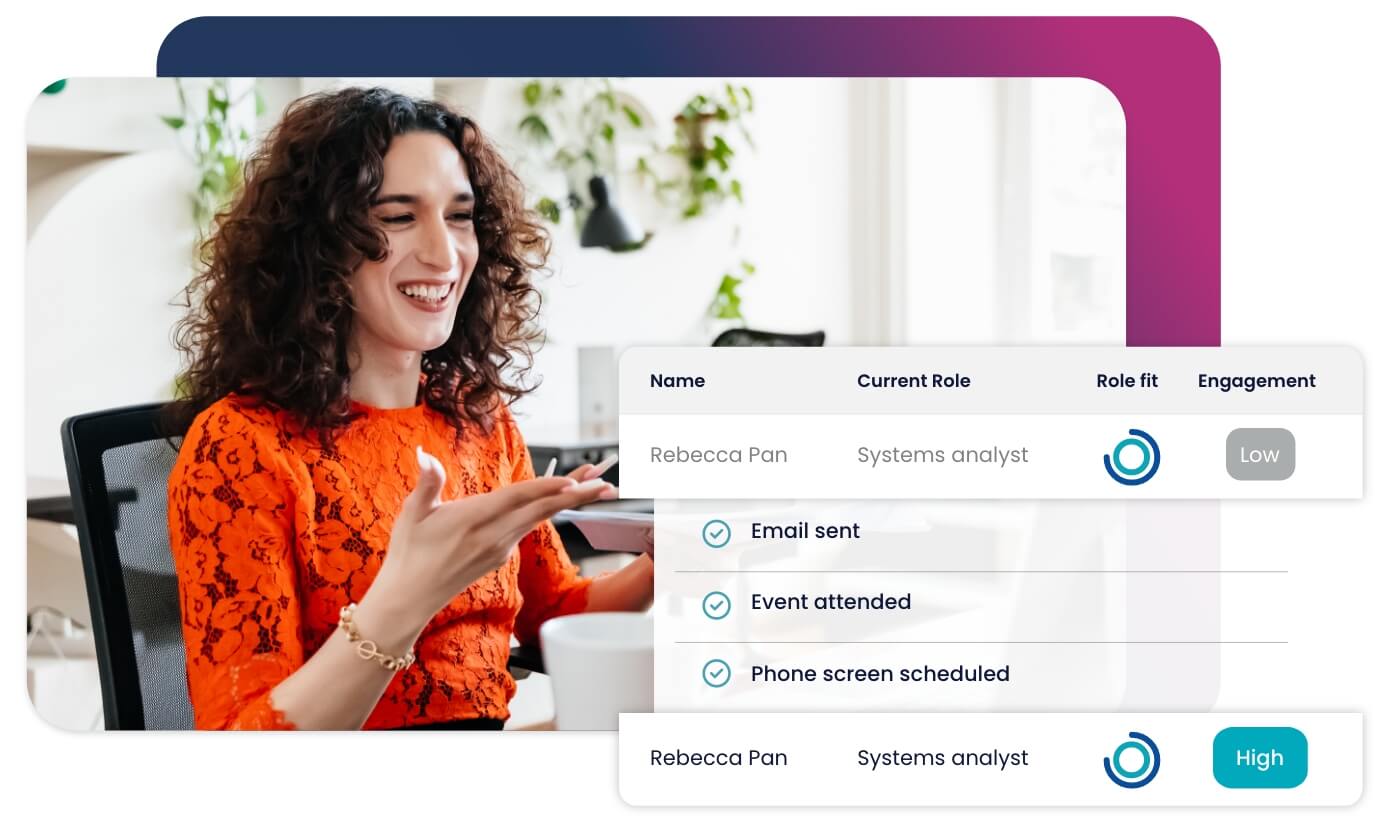
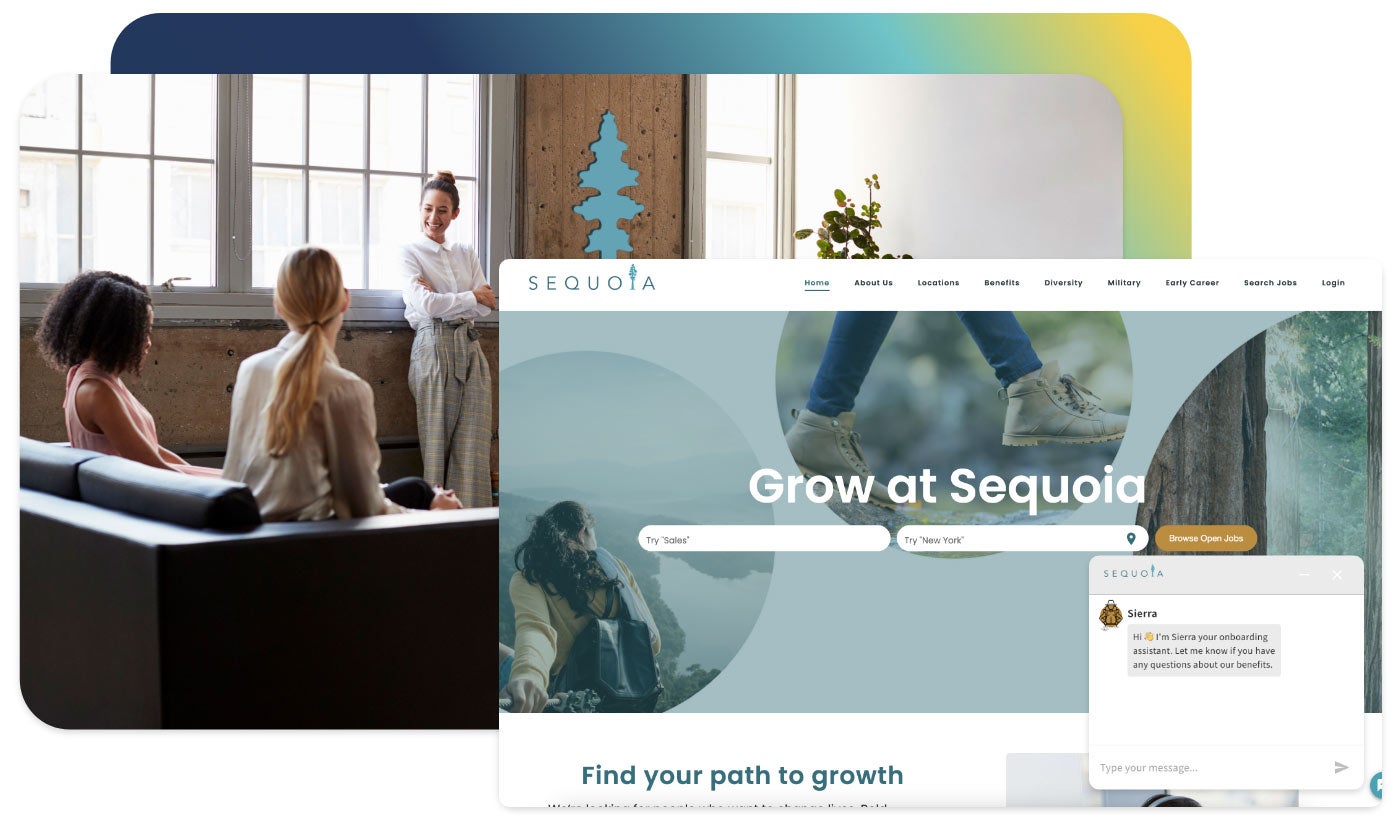


Accelerate hiring key talent to deliver care and exceed patient satisfaction.

Attract skilled candidates, speed up hiring and grow expertise in your workforce.

Simplify recruiting finance and banking talent with a platform for hard-to-fill roles.


Build a talent pipeline that engages and drives your business forward.


See how diverse and global enterprises use iCIMS to employ millions, drive innovation and connect communities worldwide.

Learn how a beloved restaurant hires 40,000+ annually with a great candidate experience.
Uncover unique market insights, explore best practices and gain access to talent experts across our library of content.


View press releases, media coverage, the latest hiring data and see what analysts are saying about iCIMS.


Streamline your tech stack and take advantage of a better user experience and stronger data governance with ADP and iCIMS.
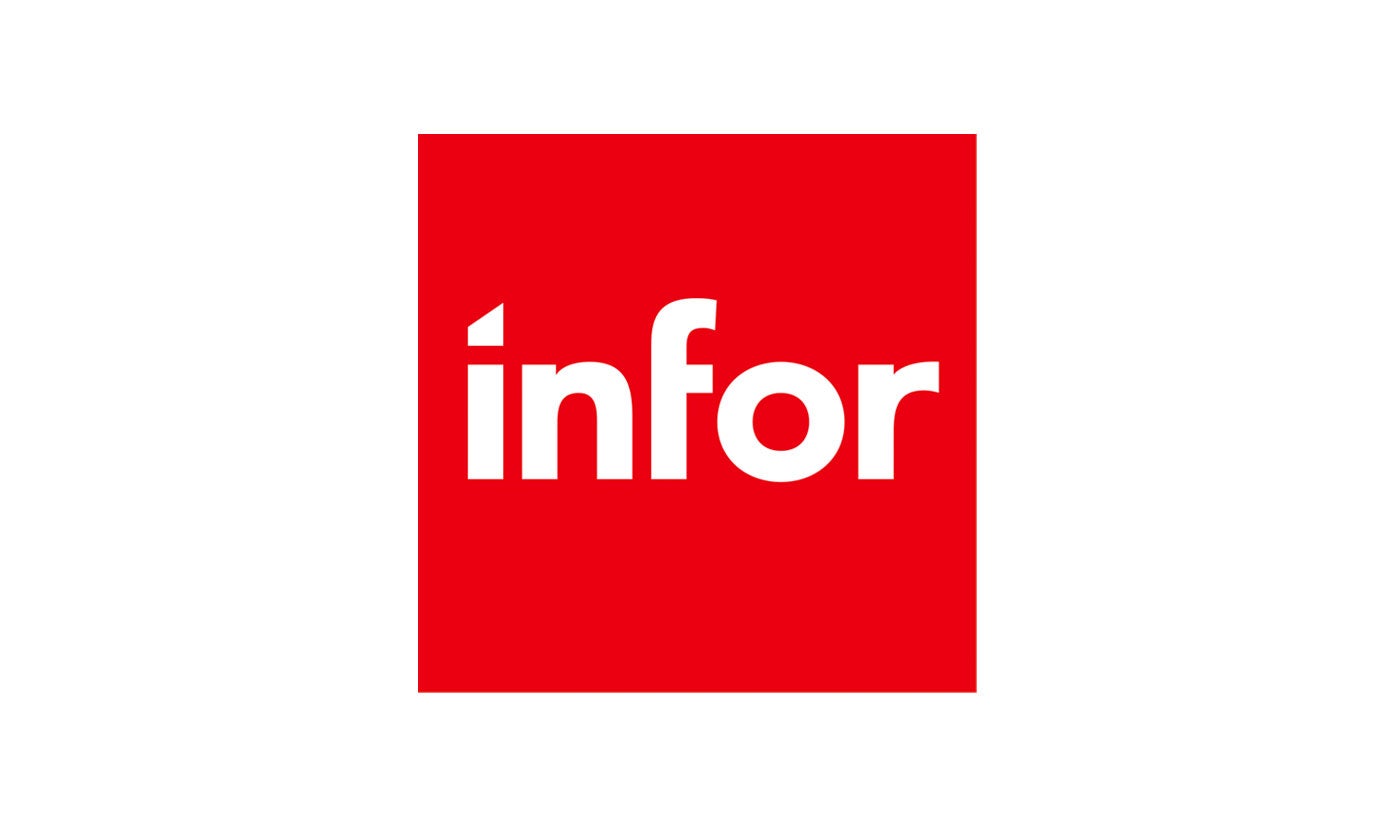
The combined power of iCIMS and Infor helps organizations strategically align their business and talent objectives.

Our award-winning partnership with Microsoft is grounded in a shared desire to transform the workplace and the hiring team experience.
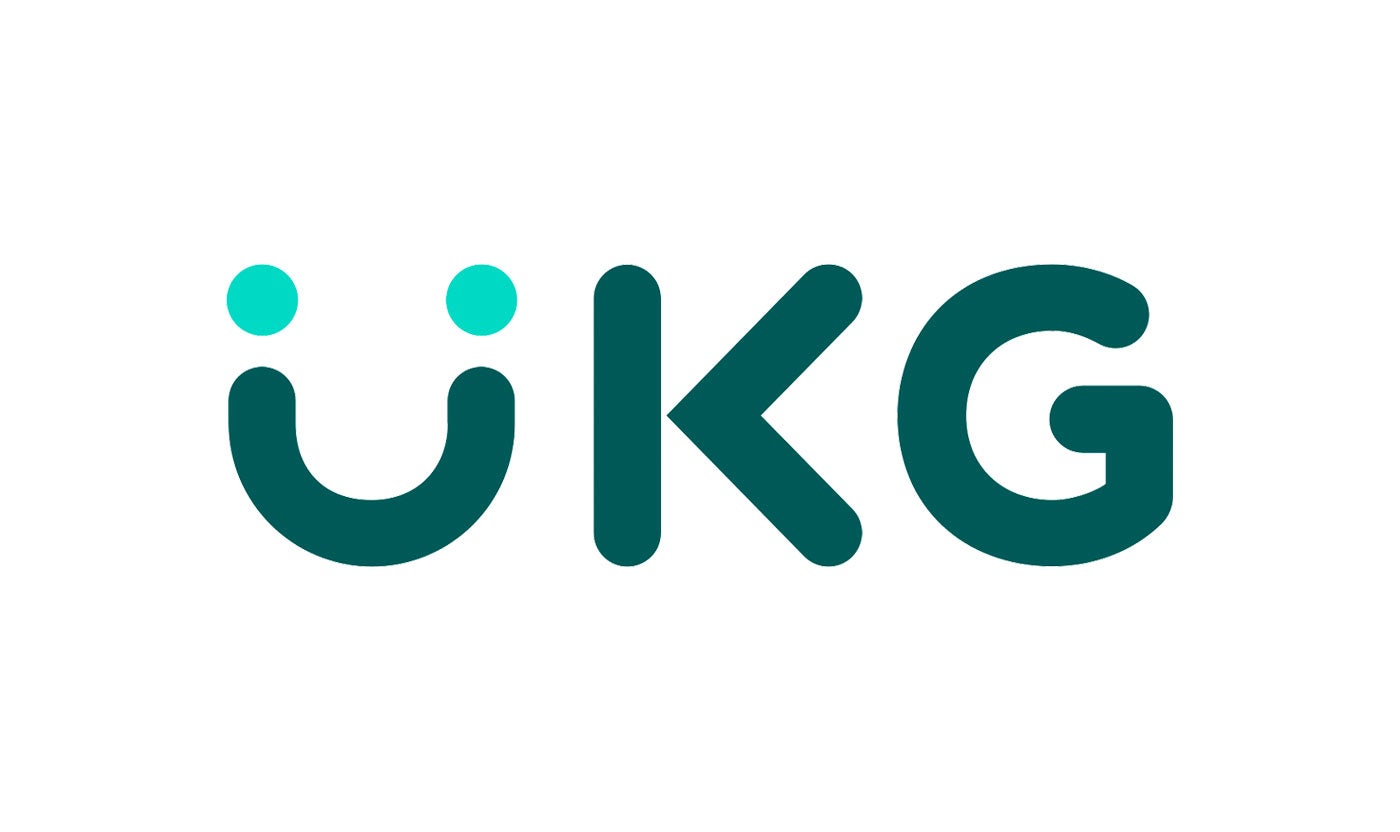
Our partnership with Ultimate Kronos Group (UKG) supports the entire talent lifecycle by bringing frictionless recruiting solutions to UKG Pro Onboarding.

Most of us have experienced times in our lives when we had to do more with less.
In a previous job, I worked in an office where we didn’t control our budget. Everything moved slowly. It wasn’t uncommon to wait three to five business days for printer paper. Don’t ask before it ran out; no one was going to listen. Paper, ink, pencils – all strategic resources, all carefully controlled.
Since then, I’ve been fortunate to work for companies that value coming up with new ways of doing things efficiently.
In marketing, you learn that nothing is ever “best” only “better.” As in, this ad performed better than the last; how can we improve it further? It’s the same with recruitment marketing.
Advertising your open jobs is easily one of the most expensive parts of recruiting. For now, let’s assume your employer branding is honed and your message is resonating with candidates. Beyond getting better ad rates, how can you reduce the amount you’re spending on recruitment marketing?
Today, let’s talk about three approaches to reduce job ad spend:
There are two main ways to get job seekers to your career site: paid and organic search. These aren’t mutually exclusive, and a healthy recruiting program usually combines both. That said, the more you can rely on organic job seeker traffic, the less you’ll need to spend on advertising.
One of the best ways to boost organic job seeker traffic is to focus on your search engine optimization (SEO). In plain English, pursuing an SEO strategy means getting your career site to rank high in candidates’ search results.
Responsibility for SEO usually falls to your marketing team; however, they’re likely focused on getting business, not candidates. If your team doesn’t have a full-time recruitment marketing associate, consider partnering with your marketing team – they probably have the skills and experience to help with your career site’s SEO or know of an agency that can help.
Building good SEO on your career site is a long-term game. You’ll start to see results quickly, but significant impact takes time to achieve. Our best advice is to get a baseline for how your career sites rank (and what you want them to rank for). Again, your marketing team can help with this. Keep your timelines long. If you’re starting today, don’t expect to see game-changing results next week. Set expectations for at least a year out.
There are many ways to reduce ad spend over the long-term by boosting your career site’s SEO. One of the best and easiest is to incorporate employee-generated videos. Video content is rich in SEO value and one of the best ways to ensure more candidates find your career sites. Employee testimonial videos are also a great way to show your brand in an authentic way.
Our Video Studio makes video production quick and easy – so there’s no reason not to put employee-generated content everywhere, from your career page to individual job descriptions. (You can also embed employee testimonial videos into your recruitment marketing newsletters as well).
In any large, professional sport, the men and women you see on the field aren’t the only players. Professional teams have minor league teams they’re associated with, sometimes called farm teams.
These farm teams play each other, but employment with them is more transient. Farm teams are not the final destination. They’re proving grounds, a place where the good becomes better, and the best get called up to the big leagues at a moment’s notice.
Farm teams exist to feed top talent into their professional, major league counterparts. This system works because professional teams never lack players when they need them. In fact, sports recruiters typically aren’t looking for talent to send directly to the majors. They’re looking for prospects to funnel onto a farm team first.
The same principle applies to recruiting in other industries. Building a talent pipeline to feed your organization can reduce the amount of time and money you spend on job advertisements and recruitment marketing. Essentially, all the hard work is done up front. Whether sourced by a recruiter or pulled in by a promising job board posting, candidates who end up in your talent pipeline have already begun their journey with your company.
Any money you’ve spent getting candidates to that point goes to waste if you lose contact with them. There’s a reason it’s cheaper for businesses to keep existing customers than attract new ones. It’s the same with candidates. Once you’ve gotten them in the door, it only makes sense to keep them engaged until the right job becomes available.
Using a candidate relationship management (CRM) system gives your team the tools they need to build, organize, and engage a talent pipeline of your own. That means money saved for you.
How much cheaper is building a talent pipeline? Let’s look at AmTrust Financial, a multinational property and casualty insurer. Since moving to iCIMS, AmTrust has grown its talent pipeline by 700%, resulting in a 50% decrease in time to fill. That’s huge in financial terms. AmTrust’s sourcing has improved so much that they now save $13,000,000 per year in agency and other recruiting costs.
Employee referral programs are one of your best sources of candidates. It takes about ten days less to hire a referred candidate than sourcing from scratch. This translates directly to savings: it costs about 40% less to hire a referred candidate thanks to reduced ad spend and agency fees. Referred hires are typically more engaged and stick around longer, with 47% staying three years or more.
Everyone is a recruiter. It’s just easy to forget that as we go about our busy schedules. That’s why many employee referral programs fall by the wayside. Providing incentives is a great way to foster a company-wide recruiting mindset – and introduce a healthy sense of competition. Incentives don’t necessarily have to be financial; non-cash rewards like extra holidays or days off go a long way.
If you’re planning on standing up a new referral program this year or just looking to optimize your existing program, be sure to browse our employee referral partners on the iCIMS Marketplace. They provide referral platforms that integrate seamlessly with the iCIMS Talent Cloud, allowing you to automate how you capture, manage, and hire referred candidates.
Check out The definitive guide to recruitment marketing ROI and see how you can attract more of the right candidates at all stages of the hiring process.


